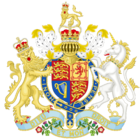Scottish Parliament (Constituencies) Act 2004 facts for kids
| Act of Parliament | |

|
|
| Long title | An Act to replace Schedule 1 to the Scotland Act 1998 making new provision in relation to the constituencies for the Scottish Parliament. (The short title is authorised by section 4 of the Act.) |
|---|---|
| Citation | 2004 c. 13 |
| Territorial extent | Scotland |
| Dates | |
| Royal assent | 22 July 2004 |
| Other legislation | |
| Amends | Scotland Act 1998 |
|
Status: Current legislation
|
|
| Text of statute as originally enacted | |
| Revised text of statute as amended | |
The Scottish Parliament (Constituencies) Act 2004 is a law passed by the Parliament of the United Kingdom. This law made important changes to the Scotland Act 1998. The 1998 Act was the original law that created the Scottish Parliament.
This 2004 Act focused on how voting areas, called constituencies, are set up for elections to the Scottish Parliament. It updated the rules to make sure these areas were fair and up-to-date.
Contents
Understanding the Scottish Parliament Act of 2004
The Scottish Parliament (Constituencies) Act 2004 is a key piece of legislation. It changed how the areas that elect members to the Scottish Parliament are drawn. This was done to ensure fair representation for everyone in Scotland.
What is an Act of Parliament?
An Act of Parliament is a law made by a country's parliament. These laws affect how people live and how the country is run. They can create new rules or change old ones.
The 2004 Act was passed by the UK Parliament. This means it is a law that applies to the whole United Kingdom, but its main focus was on Scotland.
What is the Scottish Parliament?
The Scottish Parliament is Scotland's own law-making body. It is located in Edinburgh. It was created in 1999, following a public vote in Scotland.
The Scottish Parliament can make laws on many important topics. These include education, health, justice, and the environment. This power is called devolution. It means some powers are given from the UK Parliament to a regional parliament.
What are Constituencies?
A constituency is a specific geographic area. Voters in that area elect one person to represent them in a parliament or assembly. Think of it like a district or a ward.
Each constituency has roughly the same number of people. This helps make sure that every vote counts equally. It also means that each elected representative speaks for a similar number of citizens.
Why Constituencies Matter
Constituencies are very important for democracy. They ensure that different parts of a country have a voice. They also allow people to choose a local representative. This person can then bring their community's concerns to the parliament.
The 2004 Act updated the rules for these areas. This was to make sure they still worked well for the Scottish Parliament.
Changes Made by the 2004 Act
The main goal of the Scottish Parliament (Constituencies) Act 2004 was to update the rules for Scottish Parliament constituencies. The original rules were in the 1998 Act. Over time, populations change, so boundaries need to be reviewed.
Updating the 1998 Scotland Act
The Scotland Act 1998 set up the Scottish Parliament. It also included the first rules for its constituencies. However, after a few years, it became clear that these rules needed to be adjusted.
The 2004 Act replaced a specific part of the 1998 Act. This part was called Schedule 1. By replacing it, the new Act brought in fresh rules for how constituencies should be drawn.
Impact on Scottish Elections
These changes helped ensure that future elections to the Scottish Parliament would be fair. They made sure that the number of voters in each constituency was still roughly equal. This is important for fair representation.
The Act helped keep the electoral system up-to-date. It adapted to changes in Scotland's population. This way, every citizen's vote continued to have similar weight.

